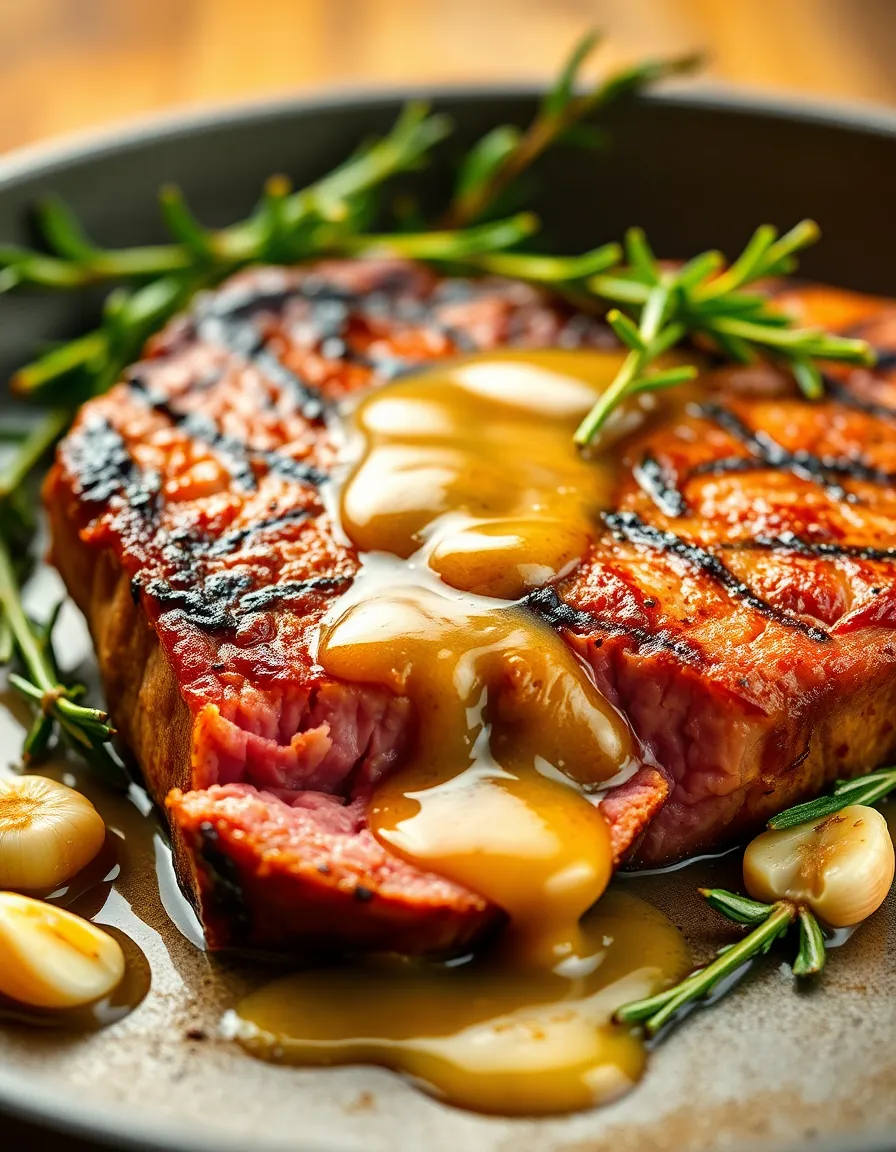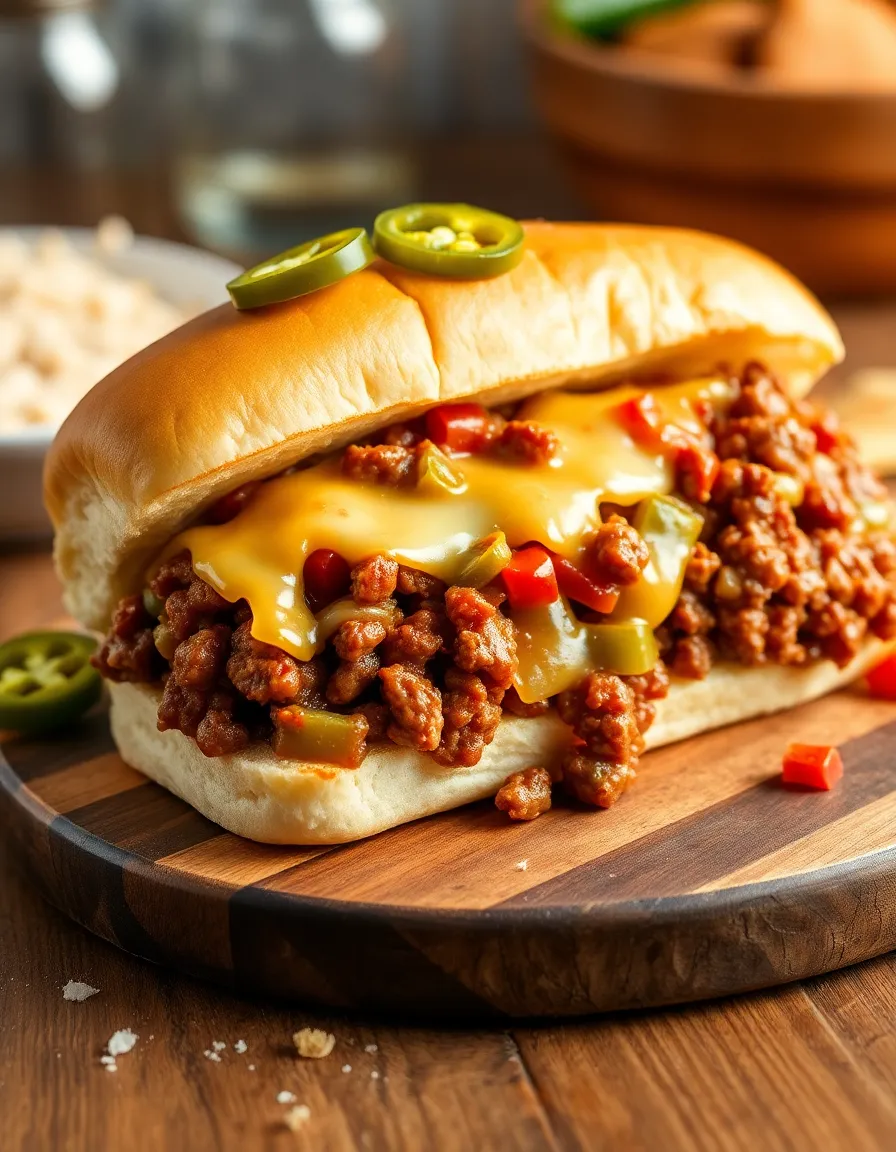Homemade Quiche Lorraine: A Flaky, Savory Delight Inspired by Paris
Transport yourself to the charming streets of Paris with this homemade Quiche Lorraine recipe. Inspired by the classic French dish, this version features a buttery, flaky crust filled with savory bacon, creamy custard, and a hint of nutmeg. Perfect for brunch, lunch, or a light dinner, this quiche is a crowd-pleaser that combines simplicity with elegance. Whether you’re a seasoned cook or a beginner, this recipe will guide you step-by-step to create a dish that’s as beautiful as it is delicious.
The magic of Quiche Lorraine lies in its balance of textures and flavors. The crisp, golden crust contrasts beautifully with the rich, velvety filling, while the smoky bacon adds depth and umami. Each bite is a harmonious blend of savory and creamy, making it a versatile dish that pairs well with a fresh salad or a glass of crisp white wine. Let’s dive into the details of how to recreate this Parisian classic in your own kitchen.
Quick Recipe Highlights
- Flavor Profile: A perfect balance of smoky bacon, creamy custard, and a hint of nutmeg.
- Texture: Crisp, flaky crust with a smooth, velvety filling.
- Aroma: The irresistible scent of baked pastry and savory bacon.
- Visual Appeal: Golden crust with a creamy, speckled filling that’s as beautiful as it is delicious.
- Skill Level Needed: Intermediate, with a focus on mastering the crust and custard.
- Special Equipment: A 9-inch tart pan, rolling pin, and pie weights or dried beans for blind baking.
Recipe Overview
- Difficulty Level: This recipe is intermediate due to the need for a perfectly flaky crust and a smooth custard filling. However, with careful attention to detail, even beginners can achieve great results.
- Category: Brunch, Lunch, Dinner
- Cuisine: French, with a focus on the classic Quiche Lorraine from the Lorraine region.
- Cost: Moderate, with most ingredients being pantry staples. The main costs come from bacon and high-quality butter for the crust.
- Season: Perfect year-round, but especially comforting in cooler months.
- Occasion: Ideal for brunches, family gatherings, or a sophisticated dinner party.
Why You’ll Love This Recipe
This Quiche Lorraine recipe is a winner for so many reasons. First, the taste is unparalleled—each bite delivers a perfect balance of smoky bacon, creamy custard, and a hint of nutmeg. The texture is equally impressive, with a flaky, buttery crust that contrasts beautifully with the smooth, velvety filling. It’s a dish that feels indulgent yet approachable, making it perfect for both casual meals and special occasions.
From a convenience standpoint, this quiche is a lifesaver. It can be made ahead of time and reheated, making it ideal for busy mornings or last-minute entertaining. The preparation is straightforward, with most of the work being in the crust, which can even be made a day in advance. Plus, the ingredients are simple and accessible, ensuring you can whip this up without a trip to a specialty store.
Nutritionally, this quiche offers a good balance of protein, fats, and carbs. The eggs provide high-quality protein, while the bacon adds a satisfying richness. Using whole milk or cream in the custard ensures a creamy texture without being overly heavy. Pair it with a fresh green salad, and you’ve got a well-rounded meal.
Socially, this quiche is a star. It’s a dish that impresses without requiring hours in the kitchen. Whether you’re hosting a brunch or bringing a dish to a potluck, this quiche is sure to garner compliments. It’s also a great conversation starter, as many people have fond memories of enjoying quiche in various settings.
Finally, this recipe is cost-effective. While it feels luxurious, the ingredients are relatively affordable, especially if you already have staples like flour, butter, and eggs on hand. It’s a dish that delivers high-end flavor without breaking the bank.
Historical Background and Cultural Significance
Quiche Lorraine hails from the Lorraine region of France, a place known for its rich culinary traditions. Originally, this dish was a simple combination of eggs, cream, and bacon baked in a bread dough. Over time, it evolved into the version we know today, with a buttery pastry crust and a custard filling. The dish gained international popularity in the mid-20th century, becoming a staple of French cuisine worldwide.
The cultural significance of Quiche Lorraine lies in its versatility and accessibility. It’s a dish that can be enjoyed by people of all ages and backgrounds, making it a true crowd-pleaser. In France, it’s often served as a light lunch or dinner, accompanied by a fresh salad and a glass of wine. Its simplicity and elegance have made it a symbol of French culinary artistry.
Over the years, Quiche Lorraine has seen numerous variations. Some versions include cheese, while others stick to the traditional recipe. Despite these adaptations, the core elements—flaky crust, creamy custard, and smoky bacon—remain unchanged, preserving the dish’s timeless appeal.
Today, Quiche Lorraine continues to be a beloved dish, both in France and abroad. It’s a testament to the enduring power of simple, well-executed recipes that celebrate quality ingredients and traditional techniques.
Ingredient Deep Dive
Bacon
Bacon is the star of Quiche Lorraine, providing a smoky, savory flavor that defines the dish. Traditionally, French lardons are used, but thick-cut bacon works just as well. When selecting bacon, opt for a high-quality, minimally processed variety to ensure the best flavor. Store bacon in the refrigerator and use it within a week of opening, or freeze it for longer storage. If you’re looking for a substitute, pancetta or smoked ham can be used, though the flavor profile will differ slightly.
Eggs
Eggs are the backbone of the custard filling, providing structure and richness. Fresh, high-quality eggs are essential for the best results. Look for eggs with bright yolks and firm whites. Store eggs in the refrigerator and use them within three to four weeks. If you’re out of eggs, a combination of egg substitutes like silken tofu or commercial egg replacers can work, though the texture may vary.
Butter
Butter is key to achieving a flaky, tender crust. Use unsalted butter to control the salt content, and ensure it’s cold when incorporating it into the dough. High-quality European-style butter, with its higher fat content, can elevate the crust even further. Store butter in the refrigerator or freezer, and bring it to room temperature only when necessary for baking.
Flour
All-purpose flour is the standard for the crust, providing the right balance of structure and tenderness. For a lighter crust, you can use pastry flour, which has a lower protein content. Store flour in an airtight container in a cool, dry place. If you’re gluten-free, a 1:1 gluten-free flour blend can be used, though the texture may be slightly different.
Cream
Heavy cream or whole milk is used to create the custard filling, lending richness and creaminess. For a lighter version, you can use half-and-half or a combination of milk and cream. Store cream in the refrigerator and use it by the expiration date. If you’re dairy-free, coconut cream or a plant-based milk alternative can be used, though the flavor will be different.
Common Mistakes to Avoid
- Overworking the dough: This can lead to a tough crust. Handle the dough as little as possible.
- Not blind baking the crust: Skipping this step can result in a soggy bottom. Always blind bake the crust before adding the filling.
- Using warm ingredients: Cold butter and water are essential for a flaky crust. Keep everything chilled until ready to use.
- Overfilling the crust: Leave a little room at the top to prevent the filling from spilling over during baking.
- Overbaking the quiche: This can cause the custard to curdle. Bake until just set, with a slight jiggle in the center.
- Not seasoning the custard: Be sure to add salt, pepper, and nutmeg to enhance the flavors.
- Using low-quality bacon: The bacon is a key flavor component, so opt for a high-quality variety.
- Rushing the cooling process: Allow the quiche to cool slightly before slicing to ensure clean cuts.
Essential Techniques
Blind Baking
Blind baking is the process of pre-baking the crust before adding the filling. This ensures a crisp, flaky base that won’t become soggy. To blind bake, line the crust with parchment paper and fill it with pie weights or dried beans. Bake until the edges are set, then remove the weights and bake until golden.
Making the Custard
The custard is the heart of the quiche, providing a creamy, velvety texture. To make the custard, whisk together eggs, cream, and seasonings until smooth. Be careful not to overmix, as this can incorporate too much air and lead to a puffy filling. Pour the custard into the pre-baked crust and bake until just set.
Rolling the Dough
Rolling the dough to the right thickness is crucial for a tender crust. Aim for about 1/8-inch thickness, and roll from the center outward to maintain an even shape. If the dough becomes too warm, chill it briefly before continuing.
Layering the Ingredients
For even distribution of flavors, layer the bacon and any additional ingredients evenly across the crust before adding the custard. This ensures every bite is balanced and delicious.
Pro Tips for Perfect Quiche Lorraine
- Chill the dough before rolling: This makes it easier to handle and prevents shrinkage during baking.
- Use a tart pan with a removable bottom: This makes it easier to slice and serve the quiche.
- Pre-cook the bacon: This ensures it’s crispy and renders out excess fat.
- Season the custard well: Don’t skimp on salt, pepper, and nutmeg for maximum flavor.
- Let the quiche rest before slicing: This allows the custard to set and makes for cleaner cuts.
- Experiment with add-ins: Try adding caramelized onions, spinach, or cheese for a twist on the classic.
Variations and Adaptations
Regional Variations
While the classic Quiche Lorraine sticks to bacon, eggs, and cream, regional variations often include cheese, such as Gruyère or Emmental. Some versions also add vegetables like spinach or mushrooms for added flavor and texture.
Seasonal Adaptations
In the spring, try adding fresh asparagus or peas to the quiche. In the fall, roasted butternut squash or caramelized onions can add a seasonal twist. These adaptations keep the dish fresh and exciting throughout the year.
Dietary Modifications
For a gluten-free version, use a gluten-free flour blend for the crust. For a dairy-free option, substitute the cream with coconut cream and use a plant-based butter alternative. These modifications ensure everyone can enjoy this classic dish.
Flavor Variations
Experiment with different herbs and spices to customize the flavor profile. Thyme, rosemary, or smoked paprika can add depth and complexity to the quiche. For a touch of sweetness, try adding caramelized onions or roasted red peppers.
Texture Modifications
For a lighter texture, use a combination of milk and cream in the custard. For a richer version, opt for heavy cream or add a dollop of crème fraîche. These adjustments allow you to tailor the quiche to your preferences.
Presentation Alternatives
Instead of a traditional tart pan, try making individual quiches in muffin tins for a fun, portable option. Mini quiches are perfect for parties or as a grab-and-go breakfast.
Serving and Presentation Guide
When serving Quiche Lorraine, presentation is key. Slice the quiche into even wedges using a sharp knife, wiping the blade clean between cuts for neat edges. Arrange the slices on a platter or individual plates, garnished with fresh herbs like parsley or chives for a pop of color.
For a traditional touch, serve the quiche with a simple green salad dressed with a light vinaigrette. The acidity of the dressing balances the richness of the quiche, creating a harmonious meal. Alternatively, pair it with roasted vegetables or a fruit salad for a more substantial spread.
Temperature is important when serving quiche. It can be enjoyed warm, at room temperature, or even cold, making it a versatile dish for any occasion. If serving warm, allow the quiche to cool slightly after baking to let the custard set. For room temperature or cold servings, let the quiche cool completely before slicing.
Portion control is another consideration. A standard 9-inch quiche serves six to eight people, depending on the size of the slices. For larger gatherings, consider making two quiches or supplementing with additional side dishes.
Finally, don’t forget the beverages. A crisp white wine, such as Sauvignon Blanc or Chardonnay, pairs beautifully with Quiche Lorraine. For a non-alcoholic option, try sparkling water with a twist of lemon or a lightly sweetened iced tea.
Wine and Beverage Pairing
Quiche Lorraine pairs wonderfully with a variety of beverages, enhancing its rich, savory flavors. A crisp, dry white wine like Sauvignon Blanc or Chardonnay complements the creamy custard and smoky bacon. The acidity in these wines cuts through the richness, creating a balanced palate.
For those who prefer red wine, a light Pinot Noir can work well, offering subtle fruit notes without overpowering the dish. If you’re serving the quiche for brunch, consider a sparkling wine like Prosecco or Champagne. The bubbles add a festive touch and cleanse the palate between bites.
Non-alcoholic options are equally delightful. Sparkling water with a splash of citrus or a lightly sweetened iced tea can refresh the palate. For a more indulgent option, try a creamy latte or cappuccino, which pairs beautifully with the quiche’s rich flavors.
Temperature is key when serving beverages with quiche. White wines and sparkling options should be chilled, while red wines are best served slightly below room temperature. Non-alcoholic beverages can be served cold or at room temperature, depending on preference.
Finally, consider the occasion when choosing your beverage. For a casual brunch, coffee or tea may be more appropriate, while a dinner party calls for wine or sparkling options. Tailor your beverage choice to the setting and your guests’ preferences for a memorable dining experience.
Storage and Shelf Life
Proper storage is essential to maintain the quality of your Quiche Lorraine. Once baked, allow the quiche to cool completely before covering it with plastic wrap or aluminum foil. Store it in the refrigerator for up to three days. For longer storage, wrap the quiche tightly and freeze it for up to two months.
When reheating, place the quiche in a preheated oven at 350°F (175°C) until warmed through. This helps retain the crust’s crispness and the custard’s creamy texture. Avoid microwaving, as it can make the crust soggy.
If freezing, it’s best to freeze the quiche in individual slices for easier reheating. Thaw overnight in the refrigerator before reheating. For best results, consume the quiche within a month of freezing.
Signs of spoilage include an off smell, mold, or a slimy texture. If you notice any of these, discard the quiche immediately. Always store the quiche in an airtight container to prevent contamination and maintain freshness.
Make Ahead Strategies
Quiche Lorraine is an excellent make-ahead dish, perfect for busy schedules. The crust can be prepared up to two days in advance and stored in the refrigerator, wrapped in plastic wrap. Alternatively, you can freeze the unbaked crust for up to a month. When ready to use, simply thaw and blind bake as directed.
The custard filling can also be prepared ahead of time. Whisk together the eggs, cream, and seasonings, then store the mixture in an airtight container in the refrigerator for up to 24 hours. Give it a quick stir before pouring it into the crust.
For fully assembled quiches, bake as directed, then cool completely before wrapping and refrigerating. Reheat in a 350°F (175°C) oven until warmed through. This method ensures the quiche retains its texture and flavor.
If you’re short on time, consider pre-cooking the bacon and storing it in the refrigerator. This step saves time on the day of baking and ensures the bacon is perfectly crispy.
Finally, if you’re hosting a brunch or party, consider making mini quiches in muffin tins. These can be baked ahead of time and reheated just before serving, making them a convenient and elegant option.
Scaling Instructions
Scaling this Quiche Lorraine recipe is straightforward, whether you’re halving it or doubling it. For a smaller quiche, halve all the ingredients and use a 7-inch tart pan. The baking time may be slightly shorter, so keep an eye on the quiche as it bakes.
To double the recipe, use two 9-inch tart pans or one large 12-inch pan. Ensure the custard is evenly distributed and adjust the baking time as needed. A larger quiche may take an additional 10-15 minutes to bake through.
When scaling, be mindful of the crust-to-filling ratio. Too much filling can cause the quiche to overflow, while too little can result in a dry texture. Aim for a balanced ratio to ensure the best results.
Equipment adjustments may be necessary when scaling. For larger batches, ensure you have enough baking sheets and oven space. If using multiple pans, rotate them halfway through baking for even cooking.
Finally, consider storage when scaling. Larger quiches may require more refrigerator or freezer space, so plan accordingly. Individual portions can be wrapped and frozen for easy reheating.
Nutritional Deep Dive
Quiche Lorraine is a nutrient-dense dish, offering a good balance of macronutrients. Each serving provides a healthy dose of protein from the eggs and bacon, along with fats from the cream and butter. The crust contributes carbohydrates, making this a well-rounded meal.
In terms of micronutrients, eggs are a great source of vitamins A, D, and B12, as well as choline, which supports brain health. Bacon adds iron and zinc, while the cream provides calcium and vitamin D. The crust, made with flour, contributes small amounts of iron and B vitamins.
For those watching their calorie intake, consider using low-fat milk or a combination of milk and cream in the custard. This reduces the overall calorie count while maintaining a creamy texture. Pairing the quiche with a fresh salad can also add fiber and additional nutrients.
Portion control is key when enjoying Quiche Lorraine. A standard serving is one-sixth of a 9-inch quiche, providing a satisfying meal without overindulging. For weight management, pair the quiche with a side of vegetables or a light soup to create a balanced plate.
Finally, consider dietary needs when preparing the quiche. For a lower-carb option, reduce the amount of crust or use a crustless version. For a higher-protein meal, add extra eggs or incorporate lean meats like turkey bacon. These adjustments allow you to tailor the quiche to your nutritional goals.
Dietary Adaptations
Gluten-Free
For a gluten-free Quiche Lorraine, use a gluten-free flour blend for the crust. Ensure all other ingredients, such as bacon and seasonings, are gluten-free. The texture of the crust may be slightly different, but the flavor will remain delicious.
Dairy-Free
To make this quiche dairy-free, substitute the cream with coconut cream or a plant-based milk alternative. Use a dairy-free butter substitute for the crust. These changes create a quiche that’s just as creamy and flavorful.
Vegan
For a vegan version, replace the eggs with a tofu-based custard and use plant-based bacon. The crust can be made with vegan butter or coconut oil. This adaptation ensures everyone can enjoy the dish, regardless of dietary preferences.
Low-Carb
For a low-carb option, reduce the amount of crust or use a crustless version. Focus on the custard and bacon for a high-protein, low-carb meal. Pair with a side of roasted vegetables for added fiber.
Keto
To make this quiche keto-friendly, use a keto-approved crust made with almond flour or coconut flour. Ensure the bacon and cream are free of added sugars. This adaptation fits well within a ketogenic diet.
Paleo
For a paleo version, use almond flour for the crust and ensure all ingredients are paleo-approved. This adaptation aligns with the principles of the paleo diet, focusing on whole, unprocessed foods.
Low-FODMAP
For a low-FODMAP quiche, use lactose-free cream and ensure the bacon is free of high-FODMAP additives. This adaptation makes the dish suitable for those with digestive sensitivities.
Troubleshooting Guide
Texture Issues
If your quiche turns out too dense, you may have overmixed the custard. Whisk the eggs and cream just until combined to avoid incorporating too much air. If the crust is soggy, ensure you blind baked it properly and allowed it to cool before adding the filling.
Flavor Balance
If the quiche tastes bland, check your seasoning. Be sure to add enough salt, pepper, and nutmeg to enhance the flavors. If the bacon is overpowering, reduce the amount or use a milder variety.
Temperature Problems
If the quiche is undercooked, it may need more time in the oven. Bake until the center is just set, with a slight jiggle. If the crust is browning too quickly, cover the edges with foil to prevent burning.
Equipment Challenges
If you don’t have a tart pan, a pie dish can be used, though the crust may be thicker. Ensure the dish is deep enough to hold the filling without overflowing. If you lack pie weights, dried beans or rice can be used for blind baking.
Ingredient Substitutions
If you’re out of an ingredient, consider substitutions that maintain the dish’s integrity. For example, use pancetta instead of bacon or a plant-based milk alternative for the cream. Be mindful of how substitutions may affect the final texture and flavor.
Timing Concerns
If you’re short on time, prepare the crust and bacon ahead of time. The custard can also be whisked together in advance. These steps streamline the process and ensure a stress-free baking experience.
Recipe Success Stories
Our community has shared countless success stories with this Quiche Lorraine recipe. One reader, Sarah, raved about how the flaky crust and creamy custard transported her back to her honeymoon in Paris. Another, Mark, shared how he adapted the recipe to be gluten-free, using almond flour for the crust, and it turned out beautifully.
Many have experimented with add-ins, like caramelized onions or spinach, and found the quiche to be incredibly versatile. One family even made mini quiches for a school fundraiser, and they were a hit with both kids and adults. The recipe’s adaptability and reliability have made it a favorite among home cooks.
Photography tips have also been a popular topic. Readers recommend using natural light and garnishing the quiche with fresh herbs for a vibrant, appetizing photo. These small touches make the dish look as good as it tastes.
Finally, the recipe’s ease of preparation has been a recurring theme. Many have praised how straightforward the steps are, even for those new to baking. The detailed instructions and troubleshooting guide have helped countless readers achieve quiche perfection.
Frequently Asked Questions
Can I make the crust ahead of time?
Yes, the crust can be prepared up to two days in advance and stored in the refrigerator. You can also freeze the unbaked crust for up to a month.
Can I use milk instead of cream?
Yes, you can use whole milk or a combination of milk and cream. However, the custard will be less rich and creamy.
How do I prevent a soggy crust?
Blind bake the crust before adding the filling. This ensures the crust stays crisp and flaky.
Can I freeze the quiche?
Yes, the quiche can be frozen for up to two months. Wrap it tightly in plastic wrap and aluminum foil before freezing.
What can I substitute for bacon?
Pancetta or smoked ham can be used as substitutes for bacon. The flavor will be slightly different but still delicious.
How do I reheat the quiche?
Reheat the quiche in a 350°F (175°C) oven until warmed through. Avoid microwaving, as it can make the crust soggy.
Can I make mini quiches?
Yes, you can make mini quiches in a muffin tin. Adjust the baking time to about 20-25 minutes.
What’s the best way to slice the quiche?
Use a sharp knife and wipe it clean between cuts for neat slices. Allow the quiche to cool slightly before slicing.
Can I add cheese to the quiche?
Yes, cheese like Gruyère or Emmental can be added for extra flavor. Sprinkle it over the bacon before adding the custard.
How long does the quiche last in the fridge?
The quiche can be stored in the refrigerator for up to three days. Ensure it’s covered tightly to maintain freshness.
Additional Resources
For more inspiration, check out our collection of French-inspired recipes, including classic croissants and coq au vin. If you’re new to baking, our guide to perfecting pie crusts is a must-read. For those interested in the history of French cuisine, explore our articles on the evolution of regional dishes.
If you’re looking for equipment recommendations, we suggest investing in a high-quality tart pan with a removable bottom. This makes it easier to slice and serve the quiche. For rolling out dough, a sturdy rolling pin and a silicone baking mat are invaluable tools.
Finally, don’t miss our seasonal recipe guides, which offer tips on adapting dishes to the freshest ingredients available. Whether it’s spring asparagus or fall squash, these guides help you make the most of each season’s bounty.
Join the Conversation
We love hearing from our readers! Share your Quiche Lorraine creations on social media using the hashtag #HomemadeQuiche. Tag us in your photos for a chance to be featured on our page. If you’ve made any unique adaptations, let us know in the comments below. Your feedback helps us improve and inspires others to try new variations.
For those interested in photography, join our community challenges to showcase your culinary skills. We offer tips on lighting, composition, and styling to help you capture the perfect shot. Don’t forget to leave a review of the recipe—your insights help others decide if it’s the right fit for their kitchen.
Finally, if you have any questions or need further guidance, our team is here to help. Reach out through our contact page or join our live Q&A sessions for real-time advice. Together, we can create a vibrant community of passionate home cooks.
The Recipe
Homemade Quiche Lorraine
Serves: 6
Prep Time: 30 mins
Cook Time: 45 mins
Total Time: 75 mins
Kitchen Equipment Needed
- 9-inch tart pan with removable bottom
- Rolling pin
- Pie weights or dried beans
- Mixing bowls
- Whisk
- Skillet
Ingredients
- 1 1/4 cups all-purpose flour
- 1/2 teaspoon salt
- 1/2 cup unsalted butter, cold and cubed
- 3-4 tablespoons ice water
- 6 slices thick-cut bacon, chopped
- 4 large eggs
- 1 cup heavy cream
- 1/2 teaspoon salt
- 1/4 teaspoon black pepper
- 1/4 teaspoon nutmeg
Directions
- In a large bowl, combine the flour and salt. Add the cold butter and use a pastry cutter or your fingers to work it into the flour until the mixture resembles coarse crumbs.
- Gradually add the ice water, one tablespoon at a time, mixing until the dough comes together. Form the dough into a disk, wrap in plastic wrap, and chill for at least 30 minutes.
- Preheat the oven to 375°F (190°C). Roll out the dough on a floured surface to fit a 9-inch tart pan. Press the dough into the pan and trim the edges. Line the crust with parchment paper and fill with pie weights or dried beans.
- Blind bake the crust for 15 minutes. Remove the weights and parchment paper, then bake for an additional 10 minutes until golden. Let cool slightly.
- In a skillet, cook the bacon until crispy. Drain on paper towels and sprinkle evenly over the crust.
- In a bowl, whisk together the eggs, cream, salt, pepper, and nutmeg. Pour the mixture over the bacon.
- Bake the quiche for 30-35 minutes, until the custard is set and the top is golden. Let cool for 10 minutes before slicing and serving.
Recipe Notes
- For a richer custard, use all heavy cream. For a lighter version, use half-and-half or whole milk.
- Add 1/2 cup grated Gruyère cheese for extra flavor, if desired.
- Serve with a fresh green salad for a complete meal.






